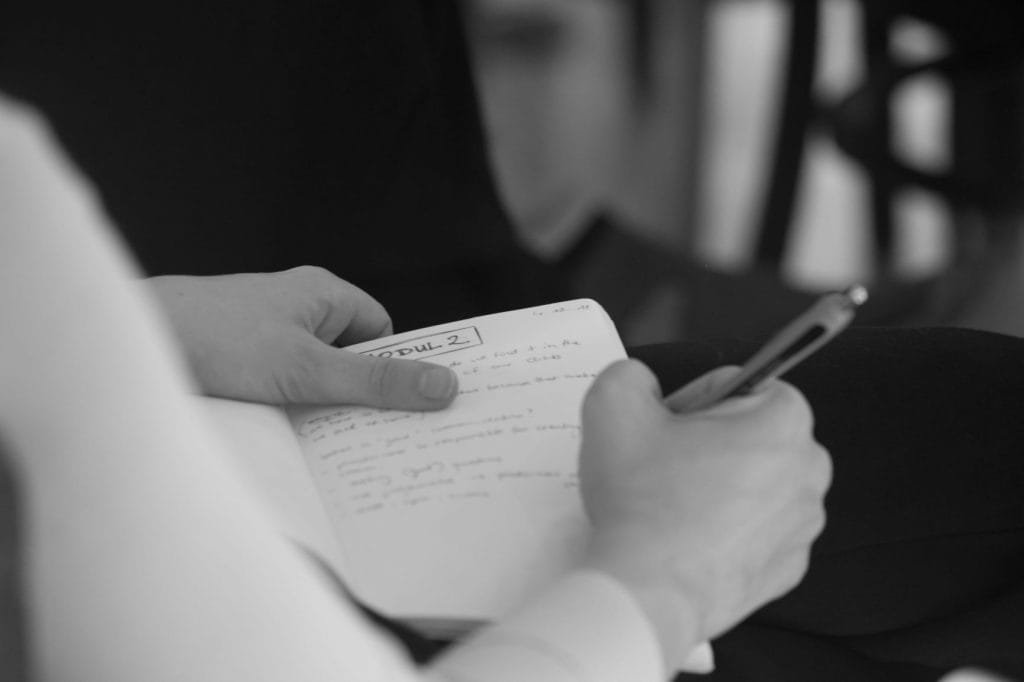
How do I write the “about section” for my marketing?
Every so often we get asked for tips about how a practitioner should write the “about section” of their website or social media pages. In truth, we are still looking for someone who can support our community of Pantarei Approach practitioners when it comes to self-promotion. That person needs to be able to encourage practitioners to show and express their uniqueness through what they say and how they say it; someone who understands Pantarei and how excited we are about all that it includes.
This article is part of a series we have written to support you, the practitioners, in your own promotional journey. We hope that these articles help you create the relationships you wish with the people around you, so they will know to come to you for sessions. Have a look at the articles we have published about: Defining your target audience and Word of mouth as a powerful promotional resource.
It comes as no surprise that for people like us, who choose a profession that focuses so much on the other person, it is not always easy to write about ourselves; a task that can be challenging for anyone. We want to write the “about section” so it will show others who we are. It should express our love and care for the people we work with. We want to find the right balance between talking about ourselves, and talking about what is dear to us.
One of the people who helped me incredibly when I was writing my “about section”, was Galit Barash. She is an expert in connecting words to businesses, and she is a leader of a group that deals with personal branding. Her website and blog are in Hebrew. If you are familiar with the language, you are welcome to read her original post about this subject, here.
I asked for Galit’s permission to translate some of what she wrote in one of her articles, as I believe that her points might benefit you when writing your own “about section” in your social media pages.

Is there a magic formula?
I don’t believe in magic. I believe in stories. And I believe that everyone knows how to tell a story.
So, what is your story?
Your story is what needs appear in the About Section. As such, make sure it is no longer than a page. So, how do you do that?
Step one – just tell the story that connected you to what you do today
Your story may be one that started during childhood, or even more recently. Whatever the start, it should connect to your choices of today; to your values, your beliefs, your uniqueness and your practice. It should represent you as a Pantarei practitioner, and everything else you combine this with. The link to what you do doesn’t need to be prominent. However, it should be something that is understood by reading between the lines.
Examples? Here are some that originate from completely different worlds, yet they all start with the story.
"I studied economics and business because it sounded important and promising to me. If you were to have met me 10 years ago and told me I would become a photographer, I would probably have raised my head from my excel sheets and told you with a chuckle, that you had made a mistake. But that's probably the thing with dreams, they come to us and stay." This is the story of Liron Cohen, photographer.
"My way into the design world was well expected. When I was five, my kindergarten teacher told me that I was a beautiful painter. My mom and many others also held this view, and it really caught on during my years at school. Eventually I came up with the name: the class painter " This is how Ada Arel's graphic design story begins.
"It all started long ago. My grandfather, from the village, was a painter who lived and breathed art, and yet every night, he went to work in the bakery to bake bread. It was from him that I absorbed my love of the creative world, both in food and in art, as well as the need to connect between them." This is how Ila Dagan's story of chocolate begins.
You are now probably asking yourself why it is important to mention that Ila's grandfather lived in a village, or that Liron mentions his excel sheets. These are really good questions that come up many times and bring us to the next level.

Step two – Avoid the clues, generalizations and explanations and try to be more specific
If we write about how much we love our profession, how important it is for our clients to be satisfied, and why we are so good at what we do, we will probably sound very similar to our colleagues and we end up looking like many others.
Our differentiation will only come from the little stories that are unique to us.
You will be surprised to find that this is usually what people remember. Not your talents, the many years of experience and endless list of abilities you have. People remember the little details that make them excited, make them smile, able to empathize, and feel something real.
People also quickly forget the fake, the ones who try hard to impress, the fancy and the flattering. A story that comes from within and the small details that make it so, are what do the trick.
Want a specific example?
"As a little girl, I was always the one who concerned herself with food while on her way. Even if we only went down to the garden, it was the thought of food that busied me. Even later, in my teens and as a young woman, I knew everything there was to know about food: how many calories there are in the white and yellow of an egg or celery stalk. Celery? Of course. I didn't touch pasta or rice as I did all I could do to stay thin." This is how the story of the naturopathic, Adi begins.
It is true that the story of the egg and celery is not particularly important, especially because we have an entire page on which to write about Adi.
It is also true that it is not representative of her as a professional, nor does it show how many years she has studied or how well she is doing today. Yet, we decided to include it, because it shows just how much this world of food has always accompanied her, and it represents the pain she has endured for many years. It shows that she can understand me because our stories are alike and that is what makes us connect, much more so than a read through her resumé.
Step three – Add what you do today. Moreover, take out the decoration, but keep the connection to your story
Are you done with the story? Were you specific? Does your story connect to what you do? Great, now write down what you have chosen to do today, i.e. the continuation of the story.
Emphasize your differentiation. What makes you different from everyone else. When you're done, don't forget to close the story with a link to the beginning. Just like a necklace.
And here's another example, of a complete chain:
"Pearls are my favorite 'diamonds'. From time to time, I get to cast ancient pearl necklaces that have been passed down from generation to generation. Each pearl has its own story, which is slowly rediscovered with every weave. The sacred pearl throwing workshops have become the best-known secret over the years. That ties us together around the table, a bit like a human pearl necklace. " From the intertwined story of Dorit Tamir.

A final, but important step
Just like for an article on a website, read your "about section" aloud and note where there are things to improve, where you repeat what has already been said, where you over-explain (I moved to another university because...) and where there are inconsistencies.
Keep it short and erase without fear. The reader understands much more, and much more quickly than you might think.
And no, it is not simple, but it is important. So start, right now. This is the right time.
Written by Vered Manasse 


